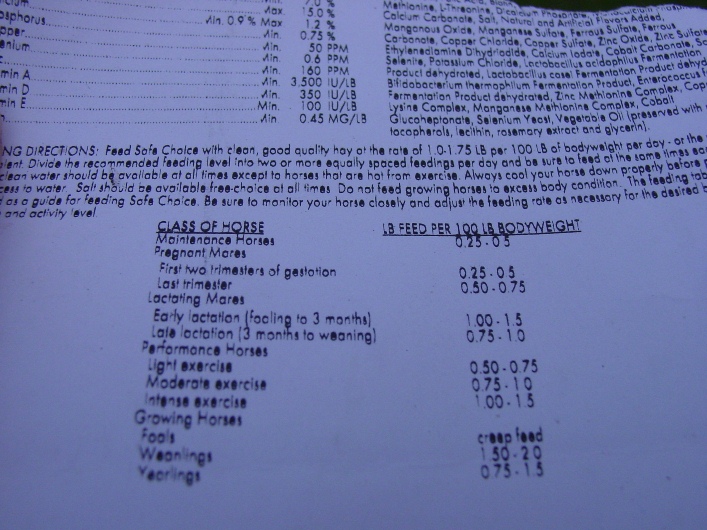The Value of a Horse Feed

On a recent visit to an area farm, the owner confided that she was considering making a feed change. She said she did not have any problems with the current product she was using, but she thought she could go less expensive product since she was done showing for the season.
The current product she was feeding was $19.99 per 50lb bag. She mentioned there was a local mill that had a feed for only $12.99, and the ingredients listed were the same.
I reviewed the tag with the customer and pointed out a few obvious differences.
- Feed ingredients are not listed on the tag in order of inclusion, like pet foods or foods for human consumption.
- Although the protein levels appeared to be the same, the bargain feed did not guaranteed the amounts of limiting amino acids for the horse, lysine, methionine and threonine.
- The amount of vitamins and minerals were based on the proper feed rate for the horses weight.
- There was no mention of added biotin, prebiotics and probiotics, or chelating of vitamins and minerals.
We then did the math to see what she would save on 1 horse per day on the bargain feed.
Current Feed: $19.99 /50lbs= $0.40 cents per pound
- Feeding rate: 0.25 pounds per 100 pounds of body weight
- 1200 x 0.25 = 3lbs per day
- 3lbs x 0.40 = $1.20 per day
Bargain Feed: $12.99/50 pounds= $0.26 cents per pound
- Feeding Rate: 1%-2% Of Horse Body Weight per day for Maintenance
- 1200 x 1.0 % = 12lbs per day
- 12lbs x 0.26 = $3.12@ day
- But it could go as high as 2% feed rate!
- 1200 x 2.0% = 24lbs per day
- 24lbs x 0.26 cents = $6.24 PER DAY!!
So, $1.20 per day vs. $3.12 to $6.24 per day. The value feed would cost an additional $1.92 -$5.04 per day to maintain a 1200 pound horse based on the manufacturer’s recommendations for a 1200 pound maintenance level horse.
The current feed was indeed a better value! Now, this may be an extreme difference, but it does pay in the end to always do the math, even if the feeding rates or prices aren’t so different. And don’t forget to factor in the value of additional things found in higher priced feeds such as prebiotics, probiotics, and biotin, that might not necessarily be reflected in the feeding rates.
